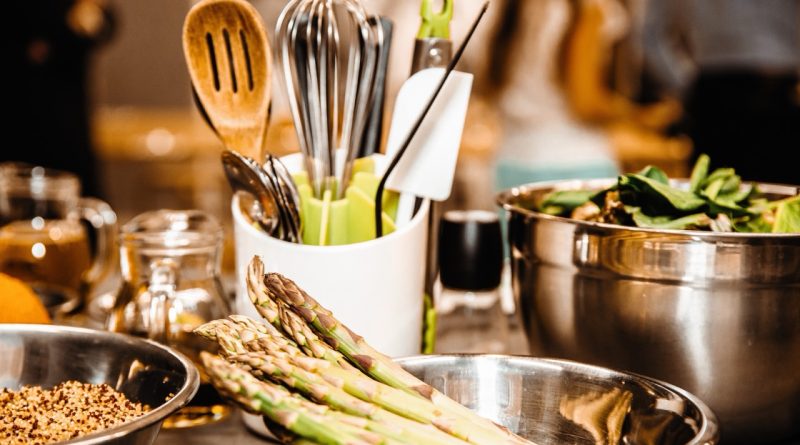The Lifecycle Of A Zwilling Kitchen Knife
===
Zwilling kitchen knives have long been celebrated for their exceptional quality and craftsmanship. Understanding the lifecycle of these precision tools not only enhances your culinary experience but also extends the longevity of your investment. From the selection of materials to the manufacturing process and ongoing maintenance, each stage plays a significant role in the knife’s performance. This article explores the journey of a Zwilling kitchen knife, offering insights into its creation and care.
Understanding the Materials Behind Zwilling Kitchen Knives
The foundation of any Zwilling kitchen knife lies in its materials. High-carbon stainless steel is a prominent choice, known for its ability to resist rust and corrosion while maintaining a sharp edge. This type of steel combines the best of both worlds: the strength and durability of carbon with the low-maintenance qualities of stainless steel. Zwilling employs a specific blend of these elements to create a blade that is both tough and flexible, allowing for precise cuts.
Another essential component is the handle material. Zwilling often uses high-quality synthetic polymers or natural woods, both of which contribute to comfort and grip. Ergonomically designed, these handles ensure that users can maintain control even during extended periods of use. Moreover, the choice of materials impacts the knife’s overall balance, an important factor that affects usability and precision in the kitchen.
Finally, Zwilling’s commitment to sustainability also plays a role in material selection. The company seeks to source materials responsibly, minimizing environmental impact while ensuring that their knives meet high standards of quality. This holistic approach not only benefits the end user but also aligns with the growing consumer demand for ethically produced kitchenware.
The Manufacturing Process: Crafting Quality and Precision
The manufacturing process of a Zwilling kitchen knife is a blend of traditional craftsmanship and modern technology. Each knife begins with a blank, which is stamped or forged from a single piece of steel. Forging, in particular, is a technique that involves heating the steel and shaping it through hammering, resulting in a stronger and more durable blade. This process enhances the knife’s edge retention and overall robustness.
Once the blade is shaped, it undergoes various treatments to improve its hardness and flexibility. Zwilling utilizes a proprietary ice-hardening technique, which involves cooling the steel at extremely low temperatures. This process not only increases the knife’s hardness but also helps to refine the microstructure of the steel, leading to a finer, sharper edge. The result is a blade that holds its sharpness longer and performs reliably in the kitchen.
After the blade is created, it goes through meticulous finishing processes, including grinding, polishing, and sharpening. These steps ensure that the knife achieves the desired sharpness and aesthetic appeal. Each Zwilling knife is carefully inspected at multiple stages to guarantee quality, ensuring that only the best products reach consumers.
Caring for Your Zwilling Knife: Maintenance Tips and Tricks
Proper care is essential for maintaining the performance and longevity of your Zwilling kitchen knife. One of the most important aspects of knife maintenance is regular sharpening. A sharp knife not only improves cutting efficiency but also enhances safety, as dull knives require more force and can lead to accidents. Zwilling recommends using a whetstone or a honing steel, which can help maintain the blade’s edge between sharpenings.
Cleaning your knife correctly is equally crucial. Zwilling advises against placing knives in the dishwasher, as the high temperatures and harsh detergents can damage both the blade and the handle. Instead, wash your knife by hand using warm water and mild soap, then dry it immediately with a soft cloth. This simple practice helps prevent corrosion and keeps the knife looking as good as new.
Additionally, proper storage is vital for protecting your knife’s edge. Using a knife block, magnetic strip, or blade guards can help prevent nicks and scratches when the knife is not in use. By following these maintenance tips and tricks, you can ensure that your Zwilling knife remains a reliable tool in your kitchen for years to come.
Recognizing When It’s Time for Knife Replacement or Repair
Even the highest-quality knives require attention, and recognizing when it’s time for replacement or repair can save you time and frustration in the kitchen. One clear sign is when you notice significant chips or nicks on the blade. While minor imperfections can often be sharpened out, deeper damage may compromise the knife’s integrity and performance, warranting professional repair or replacement.
Another indicator is persistent dullness that cannot be remedied through regular sharpening. If, after several attempts, the knife still struggles to cut through ingredients effectively, it may be time to consider a new blade. Over time, even the best knives can lose their edge, and investing in a replacement can enhance your cooking experience significantly.
Lastly, if the handle becomes loose or shows signs of wear, it may affect your grip and safety during use. A damaged handle can lead to accidents, so it’s essential to evaluate whether the knife can be repaired or if a new one would be a better investment for your culinary needs.
===
The lifecycle of a Zwilling kitchen knife is a journey of quality materials, meticulous craftsmanship, and dedicated maintenance. By understanding how these knives are made and how to care for them properly, you can ensure they remain essential tools in your culinary arsenal. Whether you’re a novice cook or a seasoned chef, maintaining your Zwilling knife will enhance your cooking experience and help you create delicious meals for years to come.
